Buffalo, New York is much more than the second-largest city in the state of New York.
The large metropolis offers many amenities and things to see and do for visitors and for residents of all ages.
There is something for everyone in Buffalo, no matter what their interests and lifestyle.
People who want to consider moving to the area need to look at the pros and cons of living in Buffalo, New York.
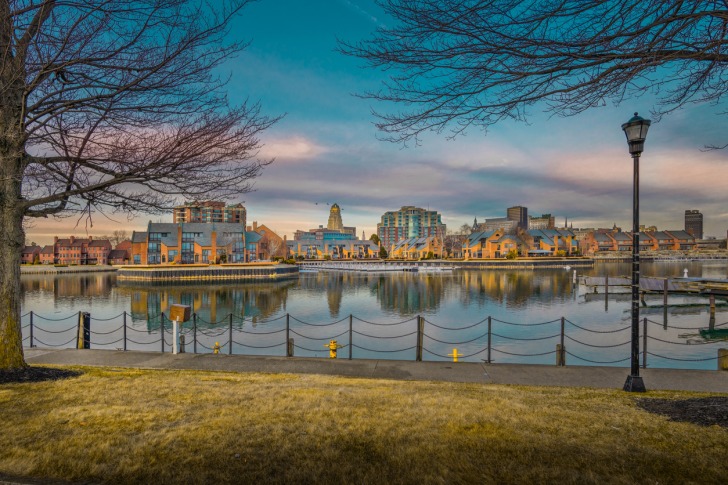
Contents
- Pros of Living in Buffalo, NY
- Cons of Living in Buffalo, New York
- Pros and Cons of Living in Buffalo, NY – Summary Table
- Buffalo Safety Overview
- Frequently Asked Questions
- How does the cost of living in Buffalo, New York compare to the cost of living in other areas?
- What is the average annual snowfall in Buffalo?
- Is Buffalo, New York a good place for families?
- Does Buffalo have any nicknames besides the City of Good Neighbors?
- Has Buffalo had a decrease in any types of crime?
Pros of Living in Buffalo, NY
1. City of Good Neighbors
Buffalo, New York has the coined nickname as the “City of Good Neighbors.”
The city is known for welcoming new residents and visitors to the area.
People who live in Buffalo are known for being friendly, which likely reduces the stress of moving for families or singles who relocate to the area.
2. Affordable Housing
The affordable housing market in Buffalo is a great perk for people who are looking for a place to live that is not as expensive as some other cities in New York.
Residents and future residents often discover that there are affordable housing options for both renters and homeowners.
The housing market in Buffalo is competitive, so homeowners and renters want to start looking as early as possible for the best affordable housing options.
It is possible to find a rental property or a home for sale in many nice Buffalo neighborhoods.
3. Strong Job Market
Buffalo has experienced steady job growth over a period of several years.
The number of total available jobs is only one reason for the fantastic job market.
The diverse employment sectors contribute to the expansion and growth of the job market.
The city is an area that is known for research and technology.
Some other strong sectors that contribute to Buffalo’s strong job market include retail, manufacturing, healthcare, finance, and education.
4. Stunning Architecture
The city of Buffalo is well-known for its buildings that feature stunning architecture.
Buffalo, New York has the second-highest number of houses that were built by famed architect Frank Lloyd Wright.
The sprawling Martin House Estate is one of his most famous achievements.
Many people visit the home, which was built as the private home of Dwight D. Martin, a Buffalo resident and business executive.
The nearly 15,000-foot estate is listed on the New York State National Historic Places.
It is also a National Historic Landmark.
The Buffalo City Hall building was completed in 1931 in the Art Deco style.
The 32-story building stands almost 400 feet tall. It is on the National Register of Historic Places.
5. Walkability and Public Transportation Availability
Many people who live in the Buffalo area do not own a motor vehicle.
The city’s walkability likely delights people who can walk to their jobs, restaurants, parks, and to recreational facilities.
The Niagara Frontier Transportation Authority provides easy access to the city bus routes.
The Buffalo Metro Rail is the local public transportation light rail system in Buffalo.
It is also operated by the Niagara Frontier Transportation Authority.
Some people use ride-sharing services to get around town or to get to the Buffalo suburbs.
6. Great Restaurants
The diverse culture in Buffalo helps to contribute to the amazing food offered by great restaurants.
Stop at a diner for a quick bite or make a reservation for a fine dining experience.
Residents and visitors have their choice of dining on traditional American food, down-home southern food, wings, burgers, or pizza.
Enjoy international faire by ordering Korean, Ghanaian, Irish, German, Italian, Polish, or Japanese dishes.
7. Amazing Attractions and Things to Do
Buffalo has an extensive list of attractions and things to do for all ages.
The area has many parks with breathtaking views, natural features, and activities.
The Buffalo Olmsted Park System became the brainchild of Fredrick Law Olmsted in 1868.
Olmsted convinced the city leaders of the time that multiple parks would best serve Buffalo, not just one park.
The Olmsted Park System consists of seven parkways, six parks, and multiple smaller green spaces.
The Japanese Garden features beautiful cherry blossoms during the spring.
Tifft Nature Preserve is located on 264 acres.
Delaware Park sits on 350 acres, also the Buffalo Zoo’s location.
Niagara Falls is the most well-known Buffalo attraction.
The breathtaking falls, the opportunity to take a Maid of the Mist boat tour of the falls, and the natural beauty of the falls and the Niagara River are some of the awe-inspiring features.
There are also hiking trails, interactive exhibits, and other activities.
The Peace Bridge spans across the Niagara River.
The international 5,800-foot bridge connects Buffalo, New York with Port Erie, Ontario, Canada.
The Buffalo Museum of Science features life-size dinosaur skeleton replicas, a plethora of artifacts, and interactive exhibits.
Several other museums educate and delight residents and visitors who come to Buffalo.
8. Small Town Feel
Buffalo has a small-town feel even though it is the second-largest city in New York.
The city does not have as many skyscrapers or other large buildings, compared to the number of skyscrapers, large buildings, and large apartment buildings in cities such as New York City.
The comfortable, small-town feel in the big city is one reason that likely attracts some people to Buffalo.
Cons of Living in Buffalo, New York
1. High Tax Rate
One issue for Buffalo residents is the high taxes.
The high tax rate affects the sales tax rate and the property tax rate.
The Buffalo sales tax rate is 8.75 percent.
The property tax rate in Buffalo is 1.88 percent of the assessed fair market value.
Property owners in Buffalo who own a non-homestead property are taxed 3.27 percent.
2. Cold Weather and Snow
Buffalo, New York experiences heavy snowfall every year.
The 2022 winter season included a snowfall that totaled 6.5 feet during mid-November.
The city saw its first snowfall of the 2023-2024 season on October 31, which included a light accumulation of snow.
The temperatures often dip quite low during the winter months, so make sure that you have a heavy coat, gloves, warm clothes, and good tires on your vehicle.
3. Lack of New Homes
The Buffalo area has a rich history.
Part of the historical charm is the older homes.
The interesting architecture of the older homes appeals to many residents.
People who want a newly built home often look for their ideal residence in the suburbs or in another city.
4. High Poverty Rate
The high rate of poverty in Buffalo has been an issue for several years.
Social service agencies, politicians, and residents discuss the need to reduce poverty, but the high poverty rate continues to plague the city.
Reasons given for the poverty rate often include that there is a lack of realistic strategies to address the issue.
The U.S. Census Bureau indicates that the poverty rate in Buffalo, New York is 29.8 percent.
The childhood poverty rate stands at 43 percent, which is the second-highest child poverty rate in the U.S.
5. Traffic Congestion
Buffalo may have a small-town feel, but residents still experience traffic congestion in several areas.
Allow plenty of extra time to get where you need to go during rush hour, and on heavily traveled roads in and around Buffalo.
Downtown Buffalo and other areas where there are a lot of restaurants, nightlife locations, and other popular destinations are also congested during busy times.
6. Population Density
Expect to experience an urban feel when living in Buffalo, NY.
The U.S. Census Bureau lists the 2020 population per square mile as 6,893.6.
Compare the 2020 population density to the 2010 population per square mile, which is listed as being 6,470.6 residents.
7. Public School Ratings
The public school system in Buffalo receives low ratings across several sites that rate school systems.
Public School Review gives the Buffalo school system a 2/10 score.
It lists Buffalo as being in the bottom 50 percent of all New York public schools.
The site Niche gives Buffalo public schools an A- grade for sports, but a C in academics.
Students have low test scores, with only 40 percent of public school students testing proficient in reading, and 41 percent of the students testing proficient in math.
8. High Crime Rate
High crime is an ongoing issue in Buffalo.
The number of murders per 100,000 residents increased from 47 in 2019 to 61 in 2020.
The number of reported assaults increased from 1,563 in 2019 to 1,798 in 2020.
The number of robberies decreased from 802 in 2019 to 680 robberies in 2020.
The 2020 recorded robberies in Buffalo are still considered to be “much higher” than the state average.
The violent crime rate in Buffalo, New York is considerably higher than the national average.
The 2020 property crime rate in Buffalo was also higher than the national average for property crimes.
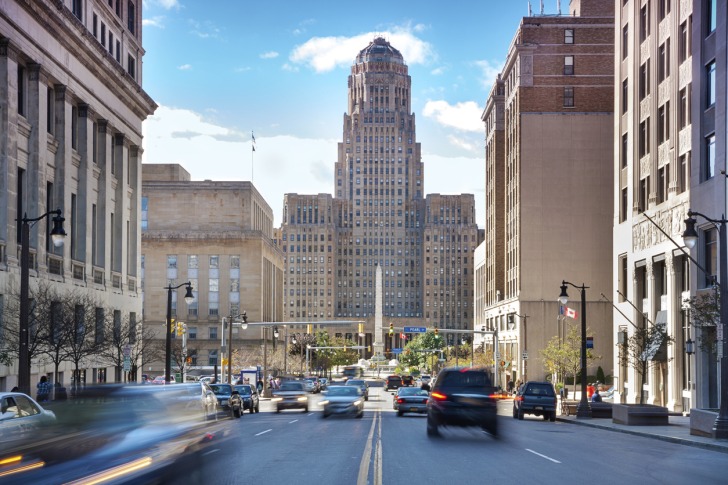
Pros and Cons of Living in Buffalo, NY – Summary Table
| Pros of Living in Buffalo, NY | Cons of Living in Buffalo, New York |
|---|---|
| 1. City of Good Neighbors | 1. High Tax Rate |
| 2. Affordable Housing | 2. Cold Weather and Snow |
| 3. Strong Job Market | 3. Lack of New Homes |
| 4. Stunning Architecture | 4. High Poverty Rate |
| 5. Walkability and Public Transportation Availability | 5. Traffic Congestion |
| 6. Great Restaurants | 6. Population Density |
| 7. Amazing Attractions and Things to Do | 7. Public School Ratings |
| 8. Small Town Feel | 8. High Crime Rate |
Buffalo Safety Overview
READ THE FULL REPORT: Buffalo Safety Review
Safety Index:
- OVERALL RISK: MEDIUM
- TRANSPORT & TAXIS RISK: MEDIUM
- PICKPOCKETS RISK: MEDIUM
- NATURAL DISASTERS RISK: MEDIUM
- MUGGING RISK: MEDIUM
- TERRORISM RISK: MEDIUM
- SCAMS RISK: HIGH
- WOMEN TRAVELERS RISK: MEDIUM
Frequently Asked Questions
How does the cost of living in Buffalo, New York compare to the cost of living in other areas?
Living in Buffalo is 27 percent less expensive than the cost of living in New York City.
The cost of living in Buffalo is also lower than the national average.
What is the average annual snowfall in Buffalo?
Buffalo gets more snow than the average snowfall in many other cities.
The national average snowfall is less than 30 inches per year.
Buffalo gets an average of 85 inches of snow each year.
The city also has more average annual rainfall compared to the rainfall in many other areas.
Is Buffalo, New York a good place for families?
Families enjoy living in several great Buffalo neighborhoods.
The friendly neighbors, the great parks, and family-friendly activities are some reasons that families choose to live in Buffalo.
Parents can check the public schools to determine the best option for their school-age children.
Does Buffalo have any nicknames besides the City of Good Neighbors?
Buffalo is also known as the “City of Trees.”
It got this nickname because of the many parks located throughout Buffalo.
Has Buffalo had a decrease in any types of crime?
The number of reported rapes, arsons, and reported thefts in Buffalo decreased in 2020, compared to the reported numbers for these same types of crimes in 2019.
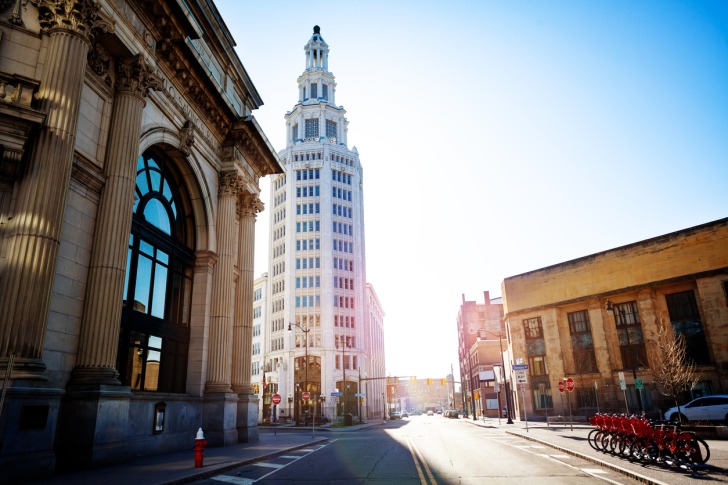
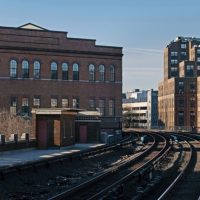

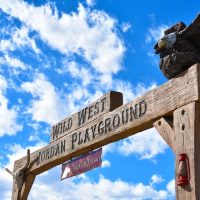
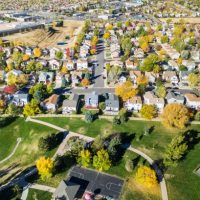
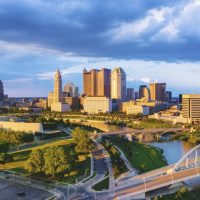
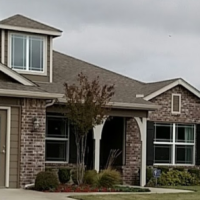





Disagree:
1)’city of good neighbors’: can anyone prove this? The suburbs are 95% White, and are often unwelcoming to outsiders.
2)’affordable housing’: Really? I fell for that one before moving here. Pity then, that these ‘affordable’ houses one is referring to, are only in the ultra-high crime, high-poverty, poor infrastructure neighborhoods. They are dilapidated, 150-year old houses with lead pipes and half of them go up in smoke (literally) due to fires. Check the house fire rate and compare nationally. No wonder they are affordable. Nobody wants to buy them.
some of your assessments / comments about the ‘pros’ re overly optimistic, to be sure. perhaps you should revise the article a bit in some areas.